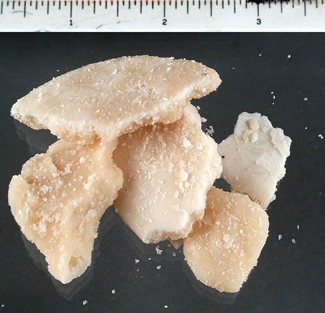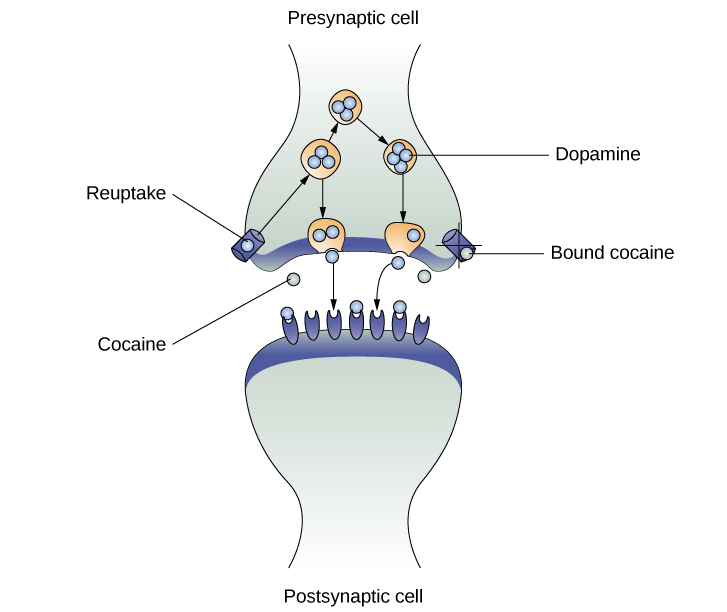| << Chapter < Page | Chapter >> Page > |
Cocaine can be taken in multiple ways. While many users snort cocaine, intravenous injection and ingestion are also common. The freebase version of cocaine, known as crack, is a potent, smokable version of the drug. Like many other stimulants, cocaine agonizes the dopamine neurotransmitter system by blocking the reuptake of dopamine in the neuronal synapse.
Crack ( [link] ) is often considered to be more addictive than cocaine itself because it is smokable and reaches the brain very quickly. Crack is often less expensive than other forms of cocaine; therefore, it tends to be a more accessible drug for individuals from impoverished segments of society. During the 1980s, many drug laws were rewritten to punish crack users more severely than cocaine users. This led to discriminatory sentencing with low-income, inner-city minority populations receiving the harshest punishments. The wisdom of these laws has recently been called into question, especially given research that suggests crack may not be more addictive than other forms of cocaine, as previously thought (Haasen&Krausz, 2001; Reinerman, 2007).

Read this interesting newspaper article describing myths about crack cocaine.
Amphetamines have a mechanism of action quite similar to cocaine in that they block the reuptake of dopamine in addition to stimulating its release ( [link] ). While amphetamines are often abused, they are also commonly prescribed to children diagnosed with attention deficit hyperactivity disorder (ADHD). It may seem counterintuitive that stimulant medications are prescribed to treat a disorder that involves hyperactivity, but the therapeutic effect comes from increases in neurotransmitter activity within certain areas of the brain associated with impulse control.

In recent years, methamphetamine (meth) use has become increasingly widespread. Methamphetamine is a type of amphetamine that can be made from ingredients that are readily available (e.g., medications containing pseudoephedrine, a compound found in many over-the-counter cold and flu remedies). Despite recent changes in laws designed to make obtaining pseudoephedrine more difficult, methamphetamine continues to be an easily accessible and relatively inexpensive drug option (Shukla, Crump,&Chrisco, 2012).
The cocaine, amphetamine, cathinones, and MDMA users seek a euphoric high , feelings of intense elation and pleasure, especially in those users who take the drug via intravenous injection or smoking. Repeated use of these stimulants can have significant adverse consequences. Users can experience physical symptoms that include nausea, elevated blood pressure, and increased heart rate. In addition, these drugs can cause feelings of anxiety, hallucinations, and paranoia (Fiorentini et al., 2011). Normal brain functioning is altered after repeated use of these drugs. For example, repeated use can lead to overall depletion among the monoamine neurotransmitters (dopamine, norepinephrine, and serotonin). People may engage in compulsive use of these stimulant substances in part to try to reestablish normal levels of these neurotransmitters (Jayanthi&Ramamoorthy, 2005; Rothman, Blough,&Baumann, 2007).

Notification Switch
Would you like to follow the 'Psychology' conversation and receive update notifications?